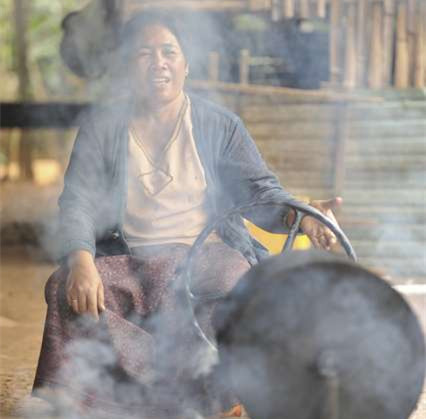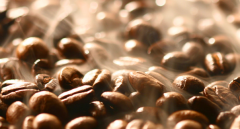Why choose wood as fuel to bake coffee? The roasting process of heated coffee beans coffee
All coffee roasters work on the same principle: they heat green coffee beans, causing physical and chemical changes that turn them into roasted coffee beans. Physical change refers to the color of coffee beans from green to brown, and the shape also changes. Chemical changes are more complex, and are the processes of production, equilibrium, and transformation of substances with fragrances, acids, and other odors. Coffee that achieves the aroma, acidity, and many other flavors and tastes desired by the roaster.

The main difference between wood roasting and gas roasting is the speed at which the internal temperature of the coffee beans rises. For a long time coffee was roasted over wood fires, a method that lasted for centuries. Later, many energy sources replaced wood as the fuel for roasting coffee beans, such as natural gas. This is to speed up roasting and reduce costs, and the choice of fuel does not affect the quality of coffee.
With the arrival of new types of roasting energy, Kim Loupis, a coffee wood roaster, still sticks to traditional, time-tested wood roasting methods. Coffee wood roasts 3-4 times slower than natural gas roasts, but many of the natural ingredients of the roasted coffee are retained in the beans. This slowly roasted coffee bean has a low acidity and a mellow taste.
You might wonder, is baking in an oven using wood fuel similar to baking directly over a fire? The smoke produced by direct roasting of wood will have a certain impact on the aroma of coffee beans. But the truth is that the change in aroma doesn't actually change the composition of the coffee, it just adds another flavor.
The wood roasting referred to in this article is different from charcoal coffee. Charcoal coffee is more regarded as Japanese charcoal coffee. It is a kind of deep roasting and darker coffee. The coffee referred to in this article is moderately roasted coffee. It is different from charcoal coffee in the degree of roasting. It is not expected that wood roasting will be conceptualized and narrowed by charcoal coffee. Therefore, it is especially different in the name of the article, but it can be seen that slowly roasted coffee beans have low acidity and mellow taste.
Important Notice :
前街咖啡 FrontStreet Coffee has moved to new addredd:
FrontStreet Coffee Address: 315,Donghua East Road,GuangZhou
Tel:020 38364473
- Prev

Patent technology to increase the content of polyphenols in roasted coffee beans how to process coffee beans correctly
The technology includes two processing steps: the first step is to use water extraction technology to extract and dissolve the polyphenols in raw coffee beans, and the second step is to roast the coffee beans with excessive polyphenols in almost vacuum. Spray high concentration of polyphenols aqueous solution before ending baking, thus greatly increasing the polyphenols in roasted coffee beans.
- Next

The origin of the history of lattes in coffee? What's a latte? How is the latte made?
The origin of the latte the famous saying that I was not in the cafe was said by a musician in Vienna on the way to the cafe. The air of Vienna is always filled with the smell of music and Latte coffee. The first person to add milk to the coffee was Kochsky of Vienna, who also opened the first coffee shop in Vienna. This is from 1683.
Related
- Beginners will see the "Coffee pull flower" guide!
- What is the difference between ice blog purified milk and ordinary milk coffee?
- Why is the Philippines the largest producer of crops in Liberia?
- For coffee extraction, should the fine powder be retained?
- How does extracted espresso fill pressed powder? How much strength does it take to press the powder?
- How to make jasmine cold extract coffee? Is the jasmine + latte good?
- Will this little toy really make the coffee taste better? How does Lily Drip affect coffee extraction?
- Will the action of slapping the filter cup also affect coffee extraction?
- What's the difference between powder-to-water ratio and powder-to-liquid ratio?
- What is the Ethiopian local species? What does it have to do with Heirloom native species?

